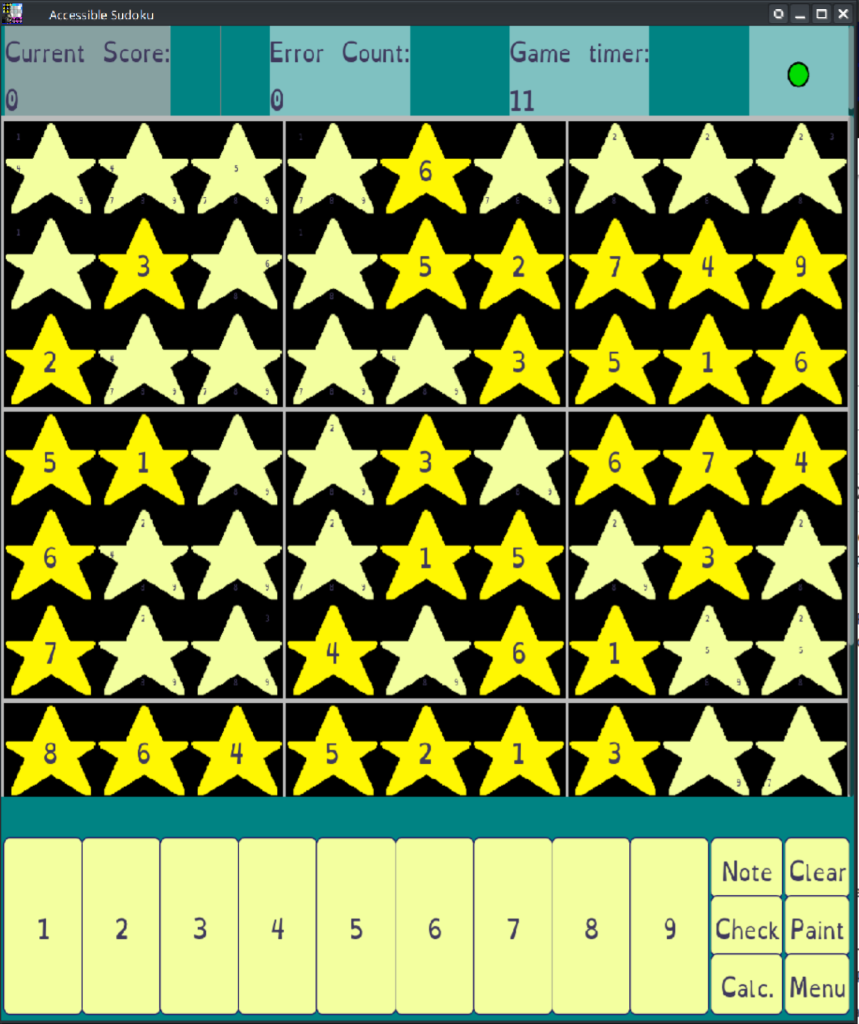
Introduction
A numbers based logic game Sudoku has been popularized around the globe for decades. An adventurous web searcher can find a large number of existing implementations and explanations of Sudoku. With that being said, you're here. Hooray!
 Accessible Sudoku has been developed using the Godot framework. Part exercise to learn the framework and firm up an understanding in Game Development and in part to expand on what's available already.
Accessible Sudoku has been developed using the Godot framework. Part exercise to learn the framework and firm up an understanding in Game Development and in part to expand on what's available already.
Difficulty
Most apps are vague on the meaning of their difficulty level. Some few will mention which solving techniques are necessary to complete each level.
In Accessible Sudoku the level correlates to how many cells have been removed from the playfield. Level 1 removes about 10% while Level 5 removes about 50%. Level 10 is impossible to complete without errors.
 Math currently says Sudoku needs a minimum of 17 clues to have a valid puzzle, so level 9 also has a very high likihood of significant errors.
Math currently says Sudoku needs a minimum of 17 clues to have a valid puzzle, so level 9 also has a very high likihood of significant errors.
Currently, Accessible Sudoku ships with unique puzzles up to level 7 (~25 clues).
Uniqueness
Puzzles shipped with Accessible Sudoku have been generated and tested to be uniquely solvable.
This means that only one solution can fit in any puzzle.
Even level 10?
Not quite, since level 10 provides 0 clues.
If a puzzle is ambiguous, meaning more than one solution is possible, a dialog will provide details at the start of game.
Players can test the uniqueness of the loaded puzzle by pressing on the uniqueness indicator in the top corner of a running game.
![]()
This may take some time to run, depending on how many open cells remain.
Feedback
Feel free to start a thread in the Sudoku Forum if support is needed or if you just want to share your theme or experience.
Direct feedback can also be submitted in the Accessible Sudoku feedback form.
